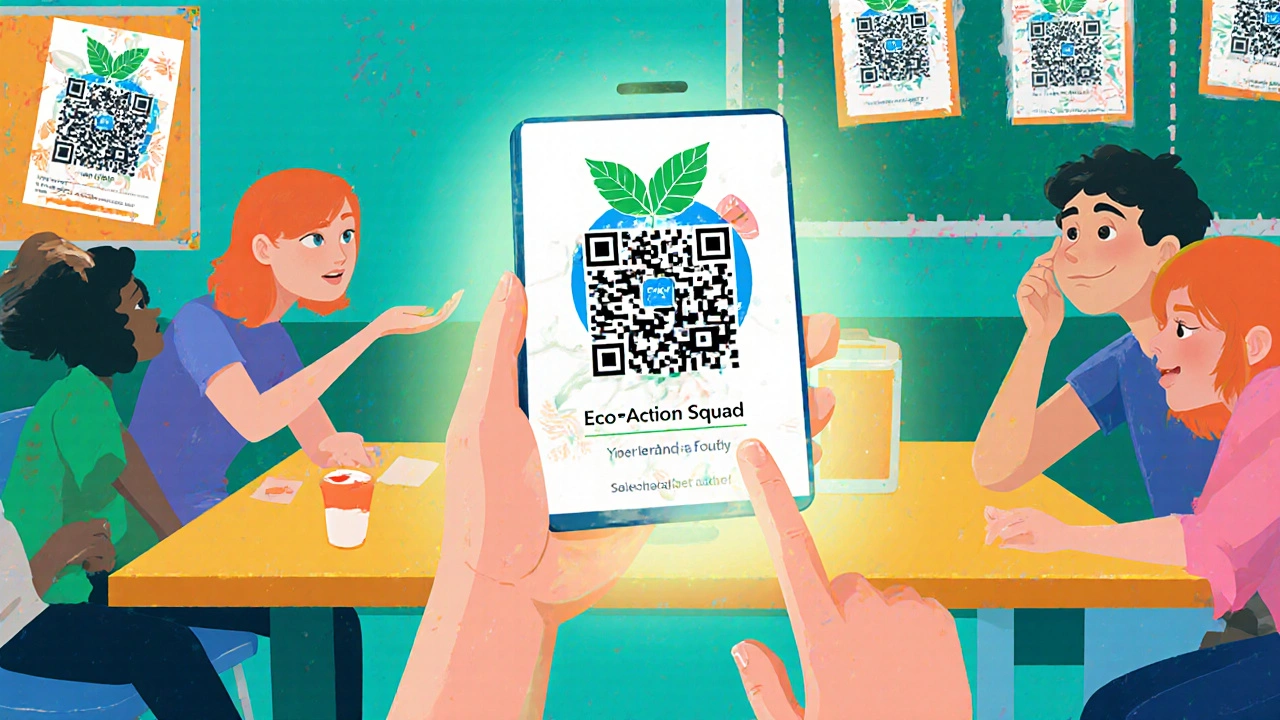School Club Popularity Planner
Audience Understanding
Survey student interests to align your club with demand.
RecommendedBrand Identity
Create a memorable name, logo, and tagline.
EssentialSignature Event
Plan one exciting event to showcase your club.
High ImpactSocial Proof
Share photos and videos of your activities.
Engagement BoostRecruitment Tools
Use flyers with QR codes for easy sign-ups.
VisibilityLeadership Pipeline
Rotate roles to prevent burnout and encourage ownership.
SustainabilityYour Club Success Plan
When you talk about a school club a student‑run group that meets regularly to pursue a shared interest, the goal is often to attract new members and keep energy high. Many teachers and student leaders wonder why some clubs fill up fast while others stay empty. The good news is that popularity isn’t magic - it’s a set of practical steps you can plan, test, and repeat.
Key Takeaways
- Know the students you want to serve and talk their language.
- Craft a clear identity - a name, logo, and tagline that stick.
- Offer activities that solve a real need or give a fun break from classwork.
- Promote where students already spend time: hallways, socials, and lunchtime.
- Keep members involved with fresh leadership and regular feedback.
Understand Your Audience
Every successful club starts with a picture of the typical student any learner enrolled in the school, ranging from freshmen to seniors. Ask yourself: What grades are most interested in the club’s topic? Do they prefer hands‑on projects or discussion‑based meetings? A quick survey - either paper‑based or using free tools like Google Forms - can reveal favorite meeting times, preferred communication channels, and any barriers (e.g., lack of transport or equipment). When you match the club’s schedule and format to those insights, the first hurdle of “no time” disappears.
Build a Strong Identity
A memorable name and visual brand act like a magnet. Choose a name that instantly tells a newcomer what the club does - think Eco‑Action Squad instead of just Club 12. Pair the name with a simple logo; you don’t need a designer, free tools like Canva let you create a clean graphic in under an hour. Once you have a name, tagline, and logo, embed them on every piece of communication - flyers, social posts, and the club’s page on the school’s website.
Offer Irresistible Activities
Students join clubs for two main reasons: they want to learn something new, or they want a break from the academic grind. Blend both. Plan at least one signature event a scheduled gathering, competition, or showcase that draws attention each term that highlights the club’s purpose. For a coding club, host a mini‑hackathon; for a drama club, put on a flash‑mob performance during lunch. Keep events short (30‑45 minutes) and public, so curious passersby can peek in.

Leverage Social Proof
Kids trust the opinions of their peers. After a successful event, capture photos and short video clips. Post them on the school’s bulletin board, Instagram, and TikTok - wherever the social media platform online service used by students to share updates and media is most active. Add captions like “20 students learned to build a robot in 45 minutes - join us next week!” This shows prospective members that the club already delivers fun and value.
Use Simple, Visible Recruitment Tools
The classic recruitment flyer a printed sheet with club details, meeting time, and sign‑up link remains powerful. Design a one‑page flyer that mirrors your brand, then place it on cafeteria tables, library bulletin boards, and teachers’ desks. Include a QR code that links to a simple Google Form - this eliminates the need for paper sign‑ups and makes data collection easy.
Tap Into Funding Sources
Money isn’t the only thing that makes a club popular, but a modest budget can boost visibility. Most schools have a student activity fund; submit a brief proposal outlining your planned events and expected costs (e.g., snacks, supplies, printing). If the fund is limited, look for community sponsors - local businesses love to support youth initiatives and often provide in‑kind donations like stickers or raffle prizes.
Create a Leadership Pipeline
Longevity matters. Appoint a leadership team a group of students responsible for planning, promotion, and member outreach each semester. Rotate roles so no one feels stuck, and give each leader a clear objective (e.g., “plan the next event” or “manage social media”). When members see peers stepping up, they’re more likely to take ownership themselves.

Sustain Engagement with Feedback Loops
After each meeting, ask for one‑sentence feedback: what they liked, what could improve. Use a sticky‑note board or a digital poll. Adjust future sessions based on the most common suggestions. Demonstrating that members’ voices shape the club builds a sense of belonging, turning casual attendees into loyal advocates.
Quick Checklist for Boosting Popularity
| Action | Why it works | When to do it |
|---|---|---|
| Survey student interests | Aligns club focus with demand | Start of term |
| Design brand (name, logo) | Creates instant recognition | Before first promotion |
| Host a signature event | Shows value in one bite‑size session | Mid‑term |
| Post photos on socials | Builds social proof | After every event |
| Distribute QR‑code flyers | Low barrier to sign‑up | Weekly, especially before lunch |
| Apply for activity fund | Enables small perks | Early term |
| Rotate leadership roles | Prevents burnout, encourages ownership | Each semester |
| Collect feedback | Shows members you listen | After each meeting |
Frequently Asked Questions
How often should a school club meet to stay active?
Aim for a consistent rhythm - once a week or bi‑weekly works for most clubs. Consistency builds habit, while occasional “special” events keep excitement high.
What if the school’s activity fund is denied?
Look for in‑kind donations from local businesses, ask teachers for spare supplies, or run low‑cost fundraisers like bake sales. Even small treats can make meetings feel special.
Can an online club be as popular as a physical one?
Yes, if you use live video platforms, schedule interactive workshops, and keep a strong digital presence. Hybrid models (some in‑person, some virtual) capture the widest audience.
How do I handle a sudden drop in attendance?
Send a quick pulse survey to find out why members stopped coming. Adjust meeting time, format, or activity focus based on their feedback, and announce the changes publicly.
What’s a good way to involve teachers without losing student ownership?
Invite a teacher to act as an advisor who provides resources and logistical help, but let students drive agenda‑setting and event planning. This balance respects both authority and autonomy.
Next Steps
Pick the first three actions from the checklist - perhaps a quick interest survey, a brand‑kickoff flyer, and a social‑media teaser. Set a deadline (e.g., two weeks) and assign each to a member of the leadership team. When you see the first sign‑up numbers climb, use that momentum to lock in a small budget and schedule your signature event. Repeat the cycle, tweaking based on feedback, and watch your school club popularity rise.





